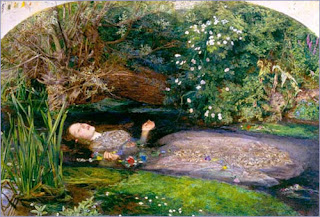The same running gag of the past being better was developed in a much more nuanced way in Richard Hurford’s quirky play Some Like It Hotter which I saw at the Theatre Royal in Margate on Saturday, a touring production by the Watermill Theatre. The auditorium was chilly and a bit musty-smelling (not surprising for a building dating back to the late 18th century), it was a smallish house but I was recognisably among odd-bods, including what seemed to be a hen party and a tall colonel-like figure who immediately went to sleep in the front row. But the show warmed us all up, with its spirited performances and its mixture of hilarity and genuine poignancy, the latter being what was missing from the formulaic Woody Allen.
Some Like It Hotter also takes us back to a golden age, this time epitomised by the movie and the three iconic performers, Marilyn Monroe, Tony Curtis and Jack Lemmon. The three immensely talented performers on stage in 2011 seemed to channel these stars of the past in an uncanny way, so not only were we watching this performance, but also what might be the sequel to the 1959 film. I have seen the virtuoso T.J.Holmes perform in many places, whether straight acting, on stage or outdoors, playing solo cello in Truro Cathedral or crooning in a Cornwall pub, so it was a real pleasure to see him in a role that gave him a chance to do all these things whilst cleverly keeping his performance as Jack Lemmon / Daphne funny but never farcical. Sarah Applewood as Marilyn was gorgeous and also complex and Paul Matania was uncannily like Tony Curtis, both immensely watchable. All of this would have been enough but what took the show to a pitch way more interesting than Midnight in Paris was the time-travelling character, Charlie, masterfully realised by Patrick Bridgman. Gil, played by Owen Wilson in the film, is similarly socially awkward and one-dimensional. All we know is that he is a successful screen-writer who wants to be a novelist and especially admires 1920s Paris and we never find out why, nor how he came to be with his deeply incompatible fiance in the first place. In contrast, Charlie, who after dying arrives in a version of heaven that is the film, Some Like It Hot, reveals layer after layer of complexity, so that by the end, we have a very Freudian view of why he likes that film and what love is all about.
Seeing the two pieces back to back was fascinating. Both writers are cleverly examining nostalgia, fame, glamour, beauty, yearning and the past. Both pieces have wonderful performances and are a visual pleasure. The live music and singing was a treat in Some Like It Hotter but it was something else that lifted it for me. The main thing about the past, as in both shows, is that the people there are often, or if the past is long enough past, always, dead. The Woody Allen film, perpetuates the idea of eternal youth – everyone in it is in their prime, at the top of their game. In Some Like It Hotter, Richard Hurford depicts Marilyn and co in their prime, but isn’t afraid to go straight to the heart of our yearning by putting ‘heaven’ in its proper place of being where we go when we die. The sudden dark shadow of the story of Charlie with its very real pain and sorrow, makes the show so much more than a romp, something satisfying and multi-layered – not candyfloss but food fit for adults.
Victoria Field










